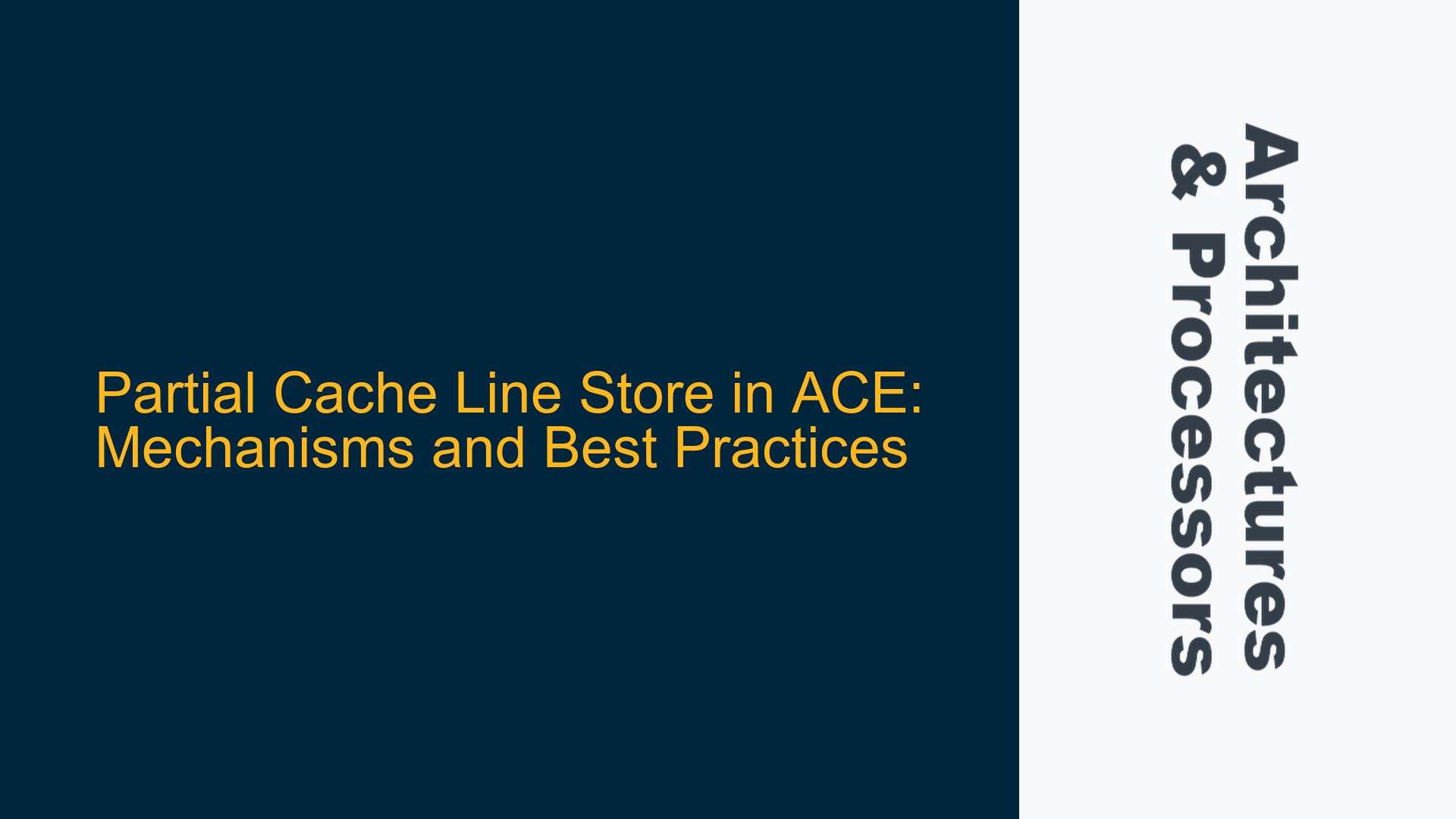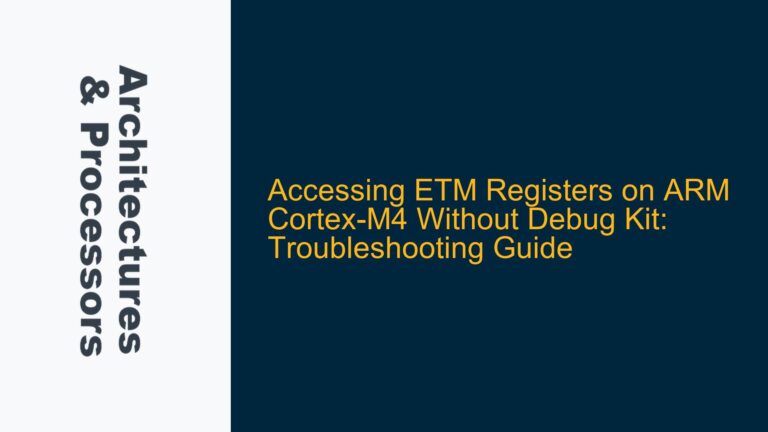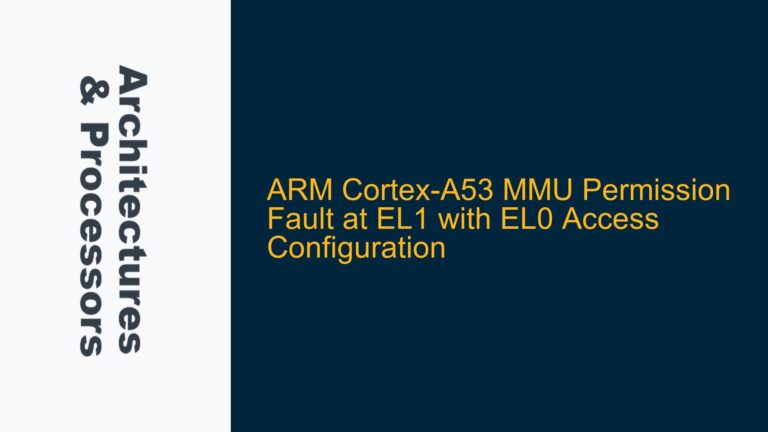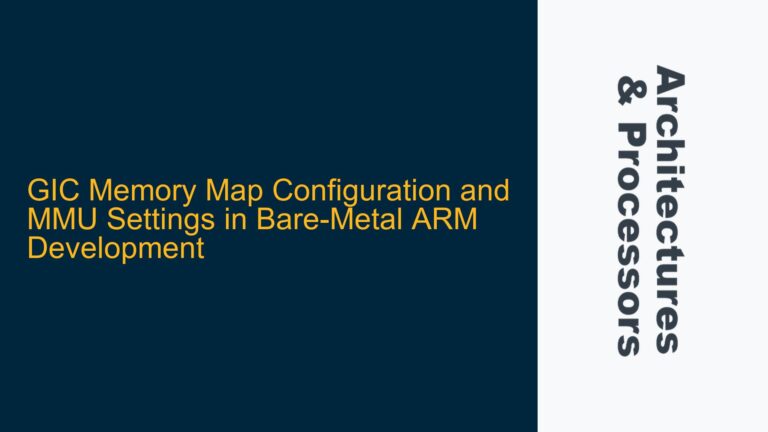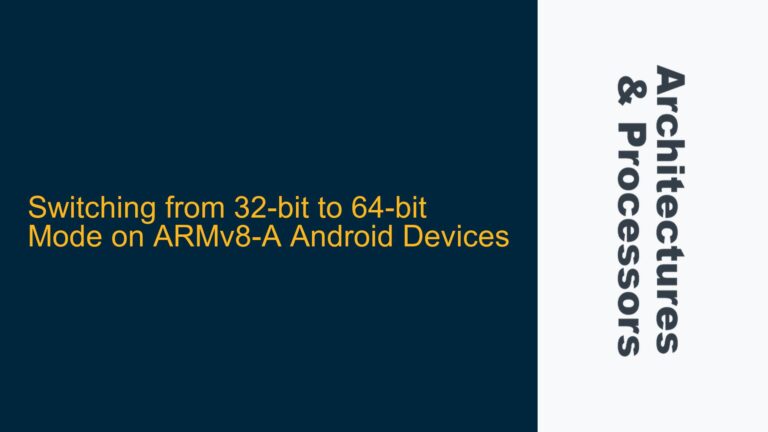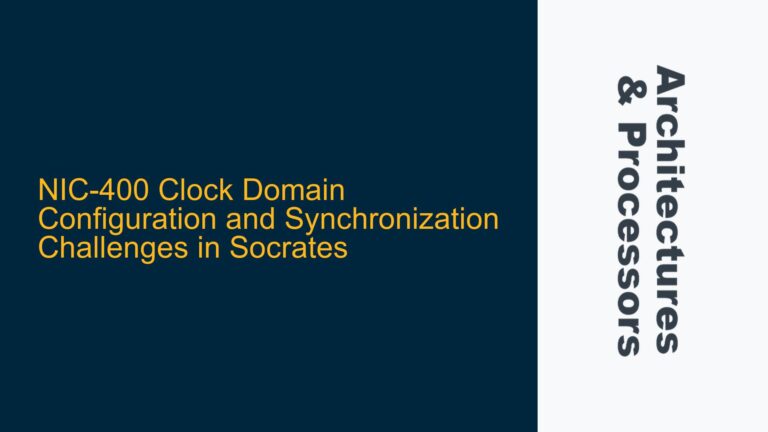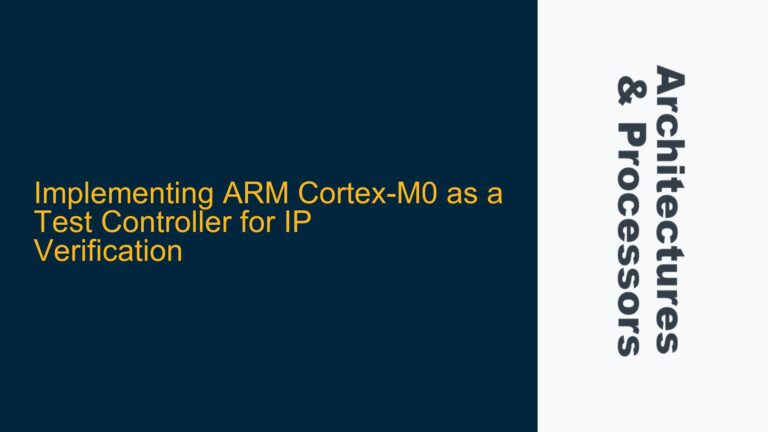ARM ACE Partial Cache Line Store Mechanisms
In ARM architectures, particularly those utilizing the ACE (AXI Coherency Extensions) protocol, handling partial cache line stores is a critical aspect of ensuring efficient and coherent memory operations. A cache line, typically 64 bytes in size, represents the smallest unit of data that can be transferred between the cache and main memory. When a processor or an ACE manager needs to write only a portion of this cache line, it must do so without disrupting the integrity and coherency of the remaining data. This scenario is common in embedded systems where memory bandwidth and latency are critical factors.
There are two primary mechanisms by which an ACE manager can perform a partial cache line store. The first mechanism involves obtaining a Unique copy of the entire cache line. This means that the ACE manager fetches the entire 64-byte cache line from memory or another cache, ensuring it has exclusive access to this data. Once the Unique copy is obtained, the ACE manager can overwrite the specific portion of the cache line that needs to be updated. This method ensures that the entire cache line is coherent and consistent, but it may introduce additional latency due to the need to fetch the entire cache line, even if only a small portion is being modified.
The second mechanism involves the use of a WriteUnique transaction. Unlike the first method, WriteUnique does not require the ACE manager to obtain a Unique copy of the entire cache line. Instead, the ACE manager can directly write to the specific portion of the cache line that needs to be updated. This method is more efficient in terms of bandwidth and latency, as it avoids the overhead of fetching the entire cache line. However, WriteUnique is typically expected to be used by ACE-Lite managers, which are simpler and do not support full cache coherency. While ACE managers can also use WriteUnique, it is generally reserved for specific use cases where the overhead of obtaining a Unique copy is undesirable.
Understanding these mechanisms is crucial for optimizing performance in ARM-based systems, particularly in scenarios where partial cache line stores are frequent. The choice between obtaining a Unique copy and using WriteUnique depends on the specific requirements of the application, including considerations of latency, bandwidth, and coherency.
Memory Coherency and Cache Line Management Challenges
The challenges associated with partial cache line stores in ARM ACE architectures primarily revolve around maintaining memory coherency and managing cache lines efficiently. Memory coherency ensures that all processors and devices in the system have a consistent view of memory. When a partial cache line store is performed, the system must ensure that the modified portion of the cache line is correctly propagated to all other caches and memory, while the unmodified portions remain unchanged.
One of the key challenges is the potential for cache line thrashing, where frequent partial updates to a cache line cause it to be repeatedly fetched and evicted from the cache. This can occur if the system does not efficiently manage the cache lines, leading to increased latency and reduced performance. Additionally, the use of WriteUnique transactions, while efficient, can introduce coherency issues if not properly managed. Since WriteUnique does not require a Unique copy of the cache line, it is possible for multiple devices to simultaneously modify different portions of the same cache line, leading to incoherent data.
Another challenge is the handling of cache line boundaries. In ARM architectures, cache lines are typically aligned to 64-byte boundaries. When a partial store is performed, the system must ensure that the store operation does not cross a cache line boundary, as this would require handling multiple cache lines and could complicate coherency management. This is particularly important in systems with multiple ACE managers, where the coherency protocol must ensure that all managers have a consistent view of the cache lines.
The complexity of managing partial cache line stores is further compounded by the need to handle various memory types and attributes. For example, write-back and write-through caches have different behaviors when it comes to partial stores. In a write-back cache, modifications are initially made only to the cache and are written back to memory only when the cache line is evicted. In contrast, a write-through cache immediately writes modifications to both the cache and memory. The choice of cache type can significantly impact the performance and coherency of partial cache line stores.
Implementing Efficient Partial Cache Line Stores in ARM ACE
To implement efficient partial cache line stores in ARM ACE architectures, several best practices and techniques can be employed. These include the use of data synchronization barriers, cache management instructions, and careful consideration of memory attributes.
Data synchronization barriers (DSBs) are essential for ensuring that all memory operations are completed before proceeding to the next instruction. When performing a partial cache line store, it is important to use DSBs to ensure that the store operation is fully completed before any subsequent operations that depend on the modified data. This is particularly important in systems with multiple ACE managers, where coherency must be maintained across all managers.
Cache management instructions, such as cache clean and invalidate operations, are also crucial for managing partial cache line stores. A cache clean operation writes the contents of a cache line back to memory, ensuring that any modifications are propagated to main memory. A cache invalidate operation removes a cache line from the cache, ensuring that subsequent accesses to that cache line will fetch the latest data from memory. These operations can be used to ensure that partial stores are correctly propagated and that the cache remains coherent.
In addition to these instructions, it is important to carefully consider the memory attributes associated with the cache lines being modified. For example, marking a memory region as non-cacheable can prevent the cache from being used for that region, which can be useful in scenarios where partial stores are frequent and the overhead of cache management is undesirable. Similarly, marking a memory region as write-through can ensure that modifications are immediately written to memory, reducing the risk of coherency issues.
Another important consideration is the use of write-combining buffers, which can be used to aggregate multiple partial stores into a single write operation. This can reduce the overhead associated with frequent partial stores and improve overall system performance. However, write-combining buffers must be used carefully, as they can introduce additional latency if not properly managed.
Finally, it is important to profile and analyze the performance of the system to identify any bottlenecks or inefficiencies related to partial cache line stores. This can be done using performance monitoring tools and techniques, such as cycle-accurate simulation or hardware performance counters. By identifying and addressing these bottlenecks, it is possible to optimize the system for efficient partial cache line stores and ensure that memory coherency is maintained.
In conclusion, partial cache line stores in ARM ACE architectures present several challenges related to memory coherency and cache management. By understanding the mechanisms involved and employing best practices such as data synchronization barriers, cache management instructions, and careful consideration of memory attributes, it is possible to implement efficient and coherent partial cache line stores. Additionally, profiling and analysis can help identify and address any performance bottlenecks, ensuring that the system operates at peak efficiency.
